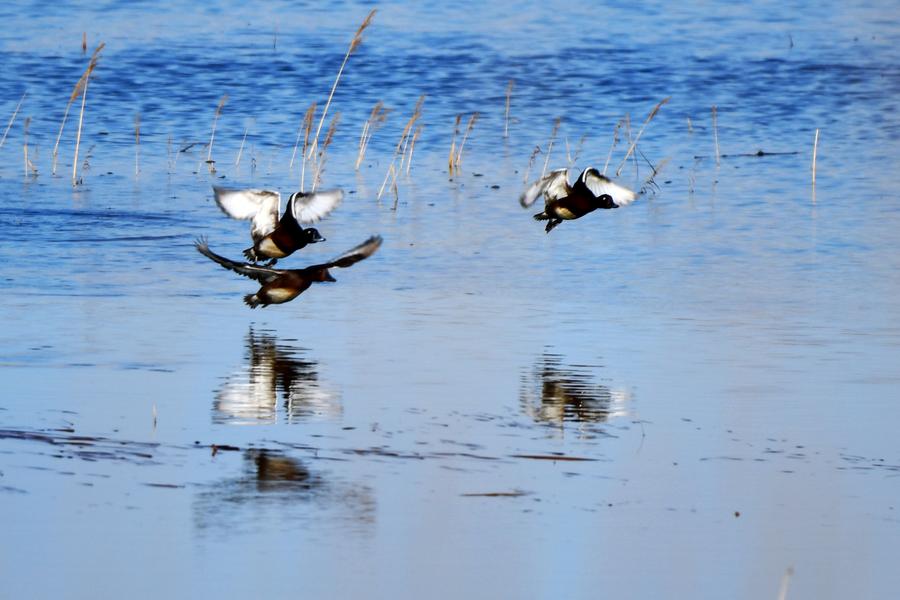Population of critically endangered diving duck surges in China


BEIJING -- The population of the Baer's Pochard (Aythya baeri), a critically endangered diving duck, has more than doubled in China over the past years, according to a nationwide wintering survey by the National Forestry and Grassland Administration.
The survey revealed that 2,555 such ducks were recorded across the country, a remarkable increase from the 1,000 individuals in 2012. The findings underscore significant progress in the conservation of one of the world's most endangered waterfowl species.
Listed as critically endangered on the red list of the International Union for Conservation of Nature and designated as a first-class protected wildlife species in China, the Baer's Pochard has been a focal point of conservation efforts across the East Asian-Australasian Flyway.
Once widespread across East and Southeast Asia and the Russian Far East, the species has experienced a dramatic population decline since the 20th century due to habitat loss and illegal hunting.
Today, China is home to the majority of the global population, with only sporadic sightings reported from other countries in recent years. The latest survey showed that the birds now winter in 76 sites across China, with 16 of these sites hosting more than 30 individuals each. These high-density habitats account for 2,136 birds, or 83.6 percent of the total recorded population.
The administration noted that the results provide a comprehensive overview of the Baer's Pochard population in China and reflect the effectiveness of the country's conservation efforts.
China has in recent years ramped up efforts to protect bird species like the Baer's Pochard. The measures include the introduction of a national action plan for protecting migratory corridors, the publication of a key habitats list for terrestrial wildlife, and the strengthened protection of nature reserves and vital wildlife habitats.
Looking ahead, the administration said it will build on the survey's findings to enhance monitoring systems, intensify conservation efforts in critical areas, and advance the protection of migratory birds and other endangered wildlife species.






































